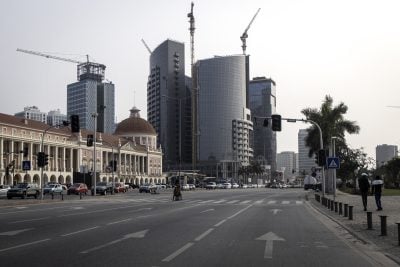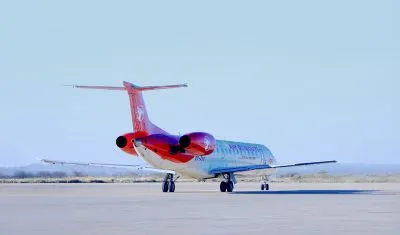South Africa’s tourism industry has great untapped potential. The government’s tourist agency plans to boost visitor numbers by over 40% by 2021.
Perched above Johannesburg’s tough inner city, Constitution Hill is one of the defining sites of South Africa’s anti-apartheid struggle. Once a squalid prison for those deemed enemies of the state, the inmate population included two activists whose names are now gold in the tourist trade – Mahatma Gandhi and Nelson Mandela.
The attraction is one of 100 locations that have been included in “Madiba’s Journey”, a smartphone app launched by South African Tourism to drive visitor interest in famous and lesser known sites on the hundredth anniversary of the former president’s birth. Amid a tough business environment defined by weak growth, political turmoil and a struggling rand, South African Tourism is on an ambitious national journey of its own as it seeks to boost visitor numbers by 5m over the five years to 2021.
With President Cyril Ramaphosa promising pro-business reforms in a bid to boost growth and create jobs, chief executive Sisa Ntshona is urging the government to break down barriers that prevent tourism from realising its full potential. “We’re going through a changing phase in terms of our economy, and government has decided to diversify our revenue streams. We really want to pull the lever of tourism to contribute more to our economy. Currently it contributes about 3% directly and we want to move that to double digits,” he says.
Perhaps most urgent among those reforms is a bid to continue dismantling onerous visa regulations which for a time demanded that all visitors with accompanying minors provide proof of their legal parenthood or guardianship. Introduced with the welcome intention of tackling child trafficking, the unnecessary bureaucratic burden dissuaded entire families of tourists from visiting. Despite a bid by the Department of Home Affairs to relax the rules in September, tourism bosses say the government must go further.
Meanwhile, Ntshona expresses relief that the Home Affairs Department is finally ready to launch an e-visa system next year offering online applications, which he says will facilitate travel from Asia and the Middle East. “We’re now putting remedies in place. Our rules can’t be more stringent than other countries. It’s important that if we want to be serious about tourism, we’ve got to remove those barriers put in front of us… We are behind the curve in terms of the world with an e-visa regime” says Ntshona.
Airline connectivity
Bringing the world to South Africa also requires improved airline connectivity, something that Ntshona says the long-haul destination has struggled with in the past. Here too, some progress is evident. British Airways has built on its established Cape Town and Johannesburg routes by launching direct flights from London Heathrow to Durban, while Cathay Pacific has launched a non-stop Hong Kong to Cape Town service likely to attract a high-end clientele. Rome-based Alitalia returned to Johannesburg’s OR Tambo in April after 17 years, while Austrian Airlines is again linking Vienna to Cape Town.
Yet the precarious position of South African Airways, the debt-laden national carrier, continues to cast a pall over the tourism industry. Once a source of national pride, the airline has been driven to the brink of bankruptcy in recent years amid accusations of undue political influence, inappropriate leadership choices and wasteful spending.
The airline has failed to turn a profit since 2011 and requires R21bn ($1.5bn) in government funding to realise a turnaround strategy under new CEO Vuyani Jarana that has no guarantee of success. In early November, new finance minister Tito Mboweni controversially suggested that the airline should be closed to save money, only to be overruled days later by President Ramaphosa, who insisted that such a move would damage public finances. Ntshona says that government must provide clarity around the airline’s future.
“The government needs to decide what SAA’s mandate is. Will it be a commercial airline, meaning it competes and is run on commercial principles and prioritises routes that yield the most return? The other way is more developmental, that says SAA’s job is to bring as many people to the country in the cheapest way possible while not making a profit or loss… if it’s developmental it becomes [a mandate] to chart out new routes that are not profitable, but you need connectivity.”
While Ntshona leaves that decision up to government, it’s clear that a developmental mandate will dovetail with South African Tourism’s ambition to encourage travellers to try less visited parts of the country in order to take the strain off urban hubs and safari parks. Cape Town, easily the country’s most popular visitor destination, forecast a 13% jump in tourism numbers to 1.77m last year, a surge that is putting a strain on infrastructure and sparking local discontent.
“We are opening a lot more secondary cities [to visitors]… I worry about popular cities like Cape Town. At certain times of the year it gets quite tight, so we are trying to understand how we can spread tourism right across the country rather than concentrating on one place.”
The organisation is gathering data on first-time travelers and repeat visitors to discover how best to market out-of-the-way destinations, and is planning to boost tourism ambassadors to ensure visitor safety. It is also targeting millennials, who Ntshona says prefer interactive experiences during frequent stays of up to six days, in contrast to the traditional three-week hauls of elderly tourists. While visitor numbers remain strong, buffeted by a weak rand, Ntshona says that South Africa cannot afford to base its fortunes on the ups and downs of the currency markets, given the ability of threatening events like the Cape Town drought to derail numbers. Nevertheless, the organisation has posted ambitious targets.
“Two years ago we started on the journey of a five year plan, [to achieve] an extra 5m more tourists in five years’ time, essentially a 40% increase. We are now in year two and just tracking below that. A couple of things hit us this year – the drought and its impact – so we are looking at 2018 as a recovery year. But 2019 is building up quite a nice momentum so I think we’ll basically catch up and be back on the same path again.”
David Thomas
Want to continue reading? Subscribe today.
You've read all your free articles for this month! Subscribe now to enjoy full access to our content.
Digital Monthly
£8.00 / month
Receive full unlimited access to our articles, opinions, podcasts and more.
Digital Yearly
£70.00 / year
Our best value offer - save £26 and gain access to all of our digital content for an entire year!

 Sign in with Google
Sign in with Google 




